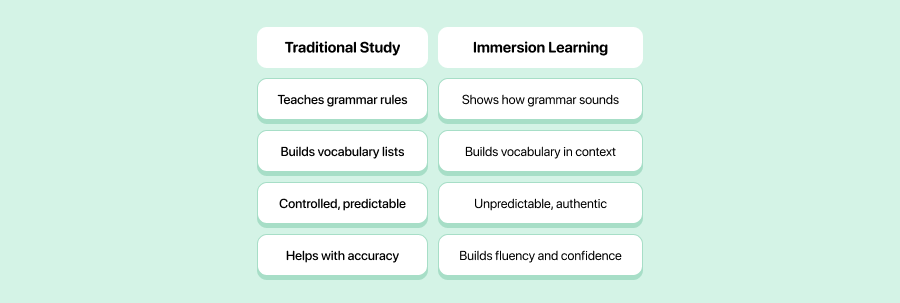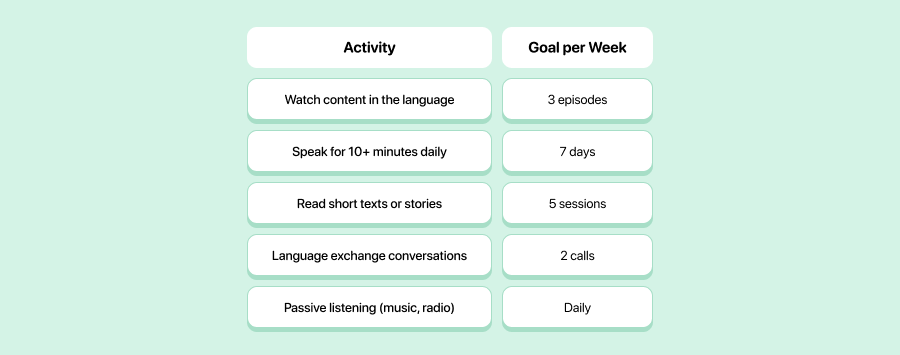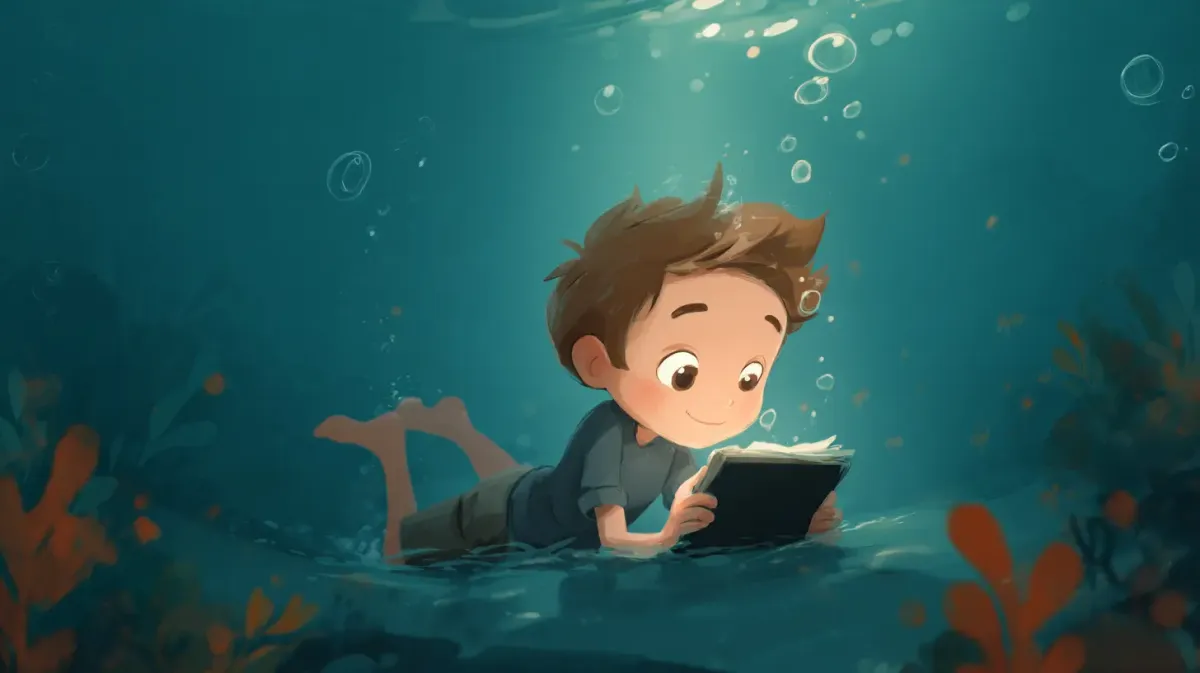You’ve probably heard someone say, “Just move to Spain, you’ll pick up the language.” Sounds magical, right? Like fluency is something you catch, like a cold.
This idea isn’t new. It’s called language immersion, and a lot of people swear by it. You learn by being surrounded by the language, no flashcards or grammar books required. Just your ears, your brain, and the world around you.
But does it actually work? More importantly — is it enough?
First: What Is Language Immersion?
It’s not just traveling to another country. It’s living and interacting in a language so consistently that you have no choice but to start thinking in it. Ordering food, asking for directions, even laughing at local memes, it’s all part of the process.
No translations. No back-and-forth. Just pure exposure.
This kind of full immersion language learning forces your brain to adapt fast, like being dropped into a foreign language swimming pool and figuring out how to float.
The Power of the Immersion Method
Let’s talk about how the immersion method actually helps you learn.
You stop translating. You start recognizing patterns. You respond automatically because you’ve heard the same phrases ten different ways from ten different people. It’s messy, but weirdly efficient.
Plus, your brain begins to associate meaning with experience, not just words on a flashcard. You remember the word “rain” because you ran for cover when someone yelled it.
Over time, your responses get quicker. Your confidence goes up. You stop memorizing and start using the language.
Why It’s Not a Magic Bullet
Now, here’s what most people won’t tell you. Immersion language learning can be overwhelming. It’s confusing. You feel lost a lot of the time. It’s frustrating to know what you want to say but have no clue how to say it. And there’s no pause button. Real conversations don’t slow down just because you’re new.
This is where people either grow or give up. And here’s another thing: if you don’t understand the grammar structure or don’t have any vocabulary to start with, total immersion might just feel like noise. You’ll hear things, but nothing will stick.
Can Immersion Replace Study?
Not really. But it can change the way you study.
Immersive language learning doesn’t need to replace grammar books, it can make them more useful. It’s one thing to read about the past tense. It’s another to hear it over and over in conversations, then realize, “Oh, that’s how they say it.”
You don’t have to choose between traditional learning and the immersion technique. It’s not a rivalry. It’s more like peanut butter and jelly: better together.
Here’s how they complement each other:

How to Practice the Immersion Method at Home
You don’t need to move abroad to try the immersion method. Here’s how to build your own immersive bubble:
- Change your phone and apps to your target language
- Watch movies or YouTube without subtitles, or with subtitles in the target language
- Read children’s books, then graduate to news and novels
- Speak with native speakers through language exchange apps
- Narrate your day out loud in your new language
And for a little extra motivation, track your exposure with a simple weekly log:

This tiny checklist helps you stay accountable, and reminds you that even five minutes of Netflix counts.
Traditional study tells you what a word means. Immersion shows you how it’s used. That’s the magic combo. If you’re serious about learning, don’t just chase the “easy” path or the “natural” method. Combine strategies. Build a foundation, then flood it with real-life input. Treat language like something to live, not just learn.
FAQ
1. Can I really become fluent just through immersion?
Immersion helps you develop natural fluency, especially in listening and speaking, but full fluency often requires a mix of approaches. Most successful learners use immersion language learning alongside grammar study, vocabulary practice, and speaking with native speakers.
2. How long does it take to see results from immersion?
It depends on how intense your exposure is. With full immersion language learning (living in a country, using the language daily), you might notice improvements in a few weeks. At-home immersion takes longer but still works, consistency is key.
3. What’s the difference between immersion and traditional learning?
Traditional learning teaches language about the language — rules, vocabulary, structure. The immersion technique teaches you to use the language by experiencing it in real time. One builds knowledge, the other builds instinct. Together, they’re a powerful combo.
















